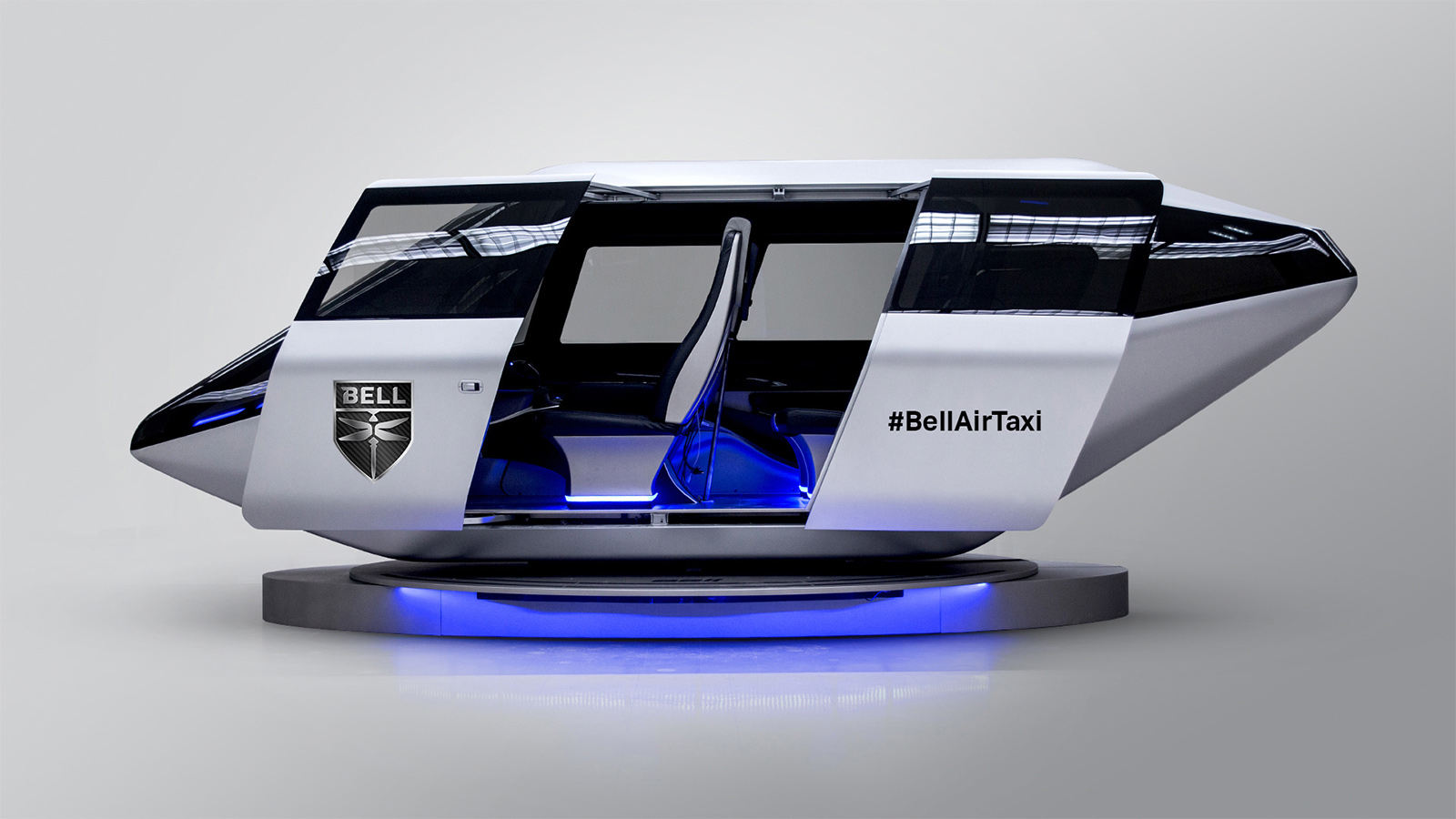Stay Up to Date
Submit your email address to receive the latest industry and Aerospace America news.
Empowering everyday commuters and other passengers to fly over urban areas will require groundbreaking research but also achieving consumer acceptance and finding the most efficient way possible to certify these aircraft for safety, said Bell’s innovation chief.
As for Bell’s specific strategy, Michael Thacker noted that the company has rebranded itself as Bell in place of Bell Helicopter to capture the innovative nature of the forthcoming aircraft. He showed the red logo on a screen and noted that it shows a dragonfly, “the ultimate master of flight.”
Thacker spoke Thursday during the “A New Era in Flight” session at the American Institute of Aeronautics and Astronautics’ 2018 Aviation Forum in Atlanta.
He said Bell is focused on “on demand mobility,” meaning passenger aircraft, and is “not really targeting the personal aircraft market.” He alluded briefly to the planned Bell Air Taxi (in artist’s rendering above) but provided no details.
On the question of how the new breed of aircraft should be certified for safety, Thacker said, “We believe that Part 23” — the FAA regulations revamped in late 2016 — “can provide a reasonable basis for vehicle certification.”
Regarding research, he referred to the development of the tiltrotor concept, noting that it was first conceived in the 1930s but not developed into operational aircraft until decades later in the form of the Bell-Boeing V-22, which flies like a fixed-wing plane in horizontal mode and a helicopter in vertical flight. Thacker said “making the transition can be harder than it looks.”
He said the tiltrotor approach is “hard to beat,” but he showed a drawing of NASA’s planned X-57 Maxwell electric aircraft and said the distributed electric propulsion on it will target the “same benefits” as the tiltrotor.
He advised factoring in plans for full autonomy from the beginning, rather than trying to add it later.
Of course, the best technical approach doesn’t matter if it results in an aircraft consumers won’t accept. So he referred to “good neighbor goals” related to noise, safety, carbon emissions and price. He said these must be key considerations from the outset, and he singled out the cost factor.
“Why would people accept these vehicles in their backyards if they cannot afford [to fly in them]?” he asked.
On safety, he noted that today’s rotorcraft mainly fly over rural areas, whereas the emerging demand is for flights over highly populated areas.
“I don’t think it’s acceptable to have a lower safety standard than we have today,” he said.
On noise, residents and authorities in some areas have restricted helicopters, he noted.
“If we blend into the community,” Thacker said, “then we have a chance. If we cannot do that, then we have already seen the results with helicopters.”
So, Thacker said, designs must address that issue.
“From a first principle,” he said, “noise is generated by tip speed.”
Regarding emissions, “we can’t add to the problem,” Thacker said, adding that he anticipates hybrid propulsion of electric power and combustion, because batteries cannot yet provide the desired range.
“There are limits to battery technology that will limit your mission set,” he said.
About Ben Iannotta
As editor-in-chief from 2013 to March 2025, Ben kept the magazine and its news coverage on the cutting edge of journalism. He began working for the magazine in the 1990s as a freelance contributor. He was editor of C4ISR Journal and has written for Air & Space Smithsonian, New Scientist, Popular Mechanics, Reuters and Space News.
Related Posts
Stay Up to Date
Submit your email address to receive the latest industry and Aerospace America news.




